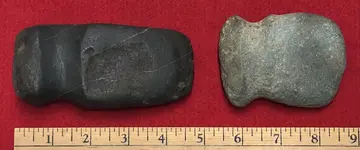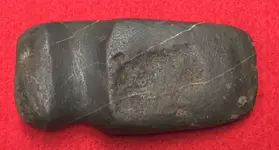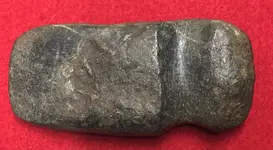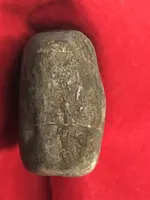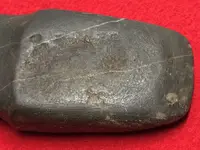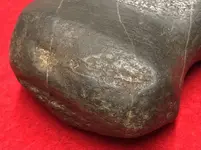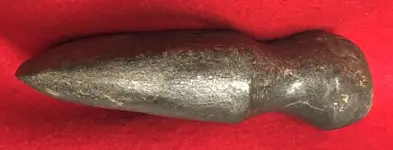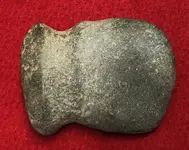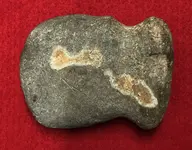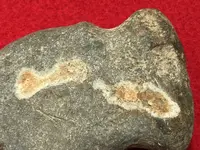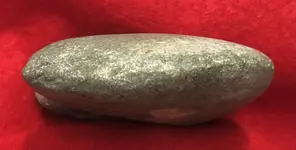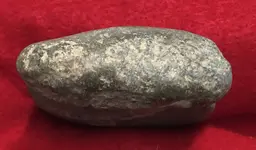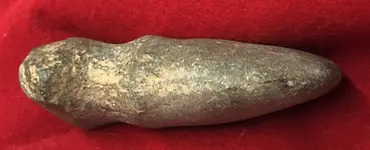The first larger axe, a three-quarter groove is not as old as the second full groove.
The first, the three quarter looks to be a dark igneous stone, not the look of granite of field boulders in my neck of the woods which are often the selected material. It exhibits "lighting streaks" in the matrix where a different mineral formed crystals as the source igneous stone cooled.
The second axe, the full groove looks like many I have found. The poll beat up from be what appears to be used for pounding and the bit well used so much the bit is worn rounded and no longer very well defined and "sharp". It exhibits peck marks still on the poll, the face and bit edge the peck marks have been smoothed out from use. This axe is made from a granite often used in the Midwest were I am. Where the selected stone is sometime glacial drift found in fields or creeks and not always perfectly symmetric but making use of the natural formed stone.
The white discoloration mineralization is often formed from minerals and organic matter breakdown in the surrounding earth as it interacts with the minerals in the stone.
They look authentic to me.
Just my view from the photos.



